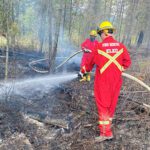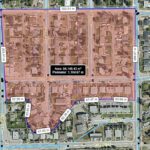Home »

B.C.’s COVID-19 response and latest updates for May 26
Adrian Dix, Minister of Health, and Dr. Bonnie Henry, B.C.’s provincial health officer, have issued the following joint statement regarding updates on the novel coronavirus (COVID-19) response in British Columbia.
Today, we are announcing 11 new cases, for a total of 2,541 cases in British Columbia.
There are 258 active cases of COVID-19 in the province, and 2,122 people who tested positive have recovered.
Of the total COVID-19 cases, 37 individuals are hospitalized, seven of whom are in intensive care. The remaining people with COVID-19 are recovering at home in self-isolation.
Every health region in British Columbia has patients with COVID-19. Since the start of the pandemic, there have been 897 in the Vancouver Coastal Health region, 1,261 in the Fraser Health region, 127 in the Island Health region, 194 in the Interior Health region and 62 in the Northern Health region.
There have been no new COVID-19 related deaths in the last day. There has been a total of 161 deaths in British Columbia and we offer our condolences to everyone who has lost their loved ones during the COVID-19 pandemic.
There have been no new health-care facility outbreaks and the outbreak at Richmond Hospital is now declared over. In total, 14 long-term care or assisted-living facilities and one acute-care unit have active outbreaks.
Public health teams continue to provide support for community outbreaks at federal corrections facilities, the processing facilities in the poultry sector and for individuals connected to the Kearl Lake plant in Alberta.
We know that COVID-19 continues to be in all of our communities and will be for some time. We also know that transmission occurs when in close contact with others, so the measures we have in place are the best things we can do to slow the spread of the virus.
While we have worked hard to flatten our curve, as we increase our social interactions and spend more time with others, we may see an increase in new cases. This is because the illness often can be mild or asymptomatic in the early stages, which means people may not realize they are sick.
The faster we can identify and trace new cases, the better we will all be – especially as we ease restrictions.
Public health contact tracing follows the transmission trail to quickly alert close contacts to take precautions and break the chain.
We can help our public health teams and support each other by keeping our household bubbles small. We can also do our own ‘contact tracing’ by paying attention to where we are going each day and who we are seeing.
As we go forward, our ‘new normal’ is different and will be for some time. We all have a role to play to be successful in B.C. and it relies on our shared commitment and effort. Bigger spaces with fewer faces will keep all of us safe.
Lead image: A sign in front of Cranbrook’s Superstore noting priority access for health care workers. Carrie Schafer/e-KNOW photo
e-KNOW







